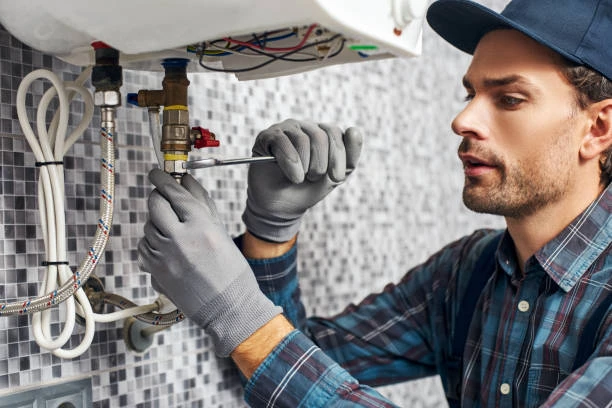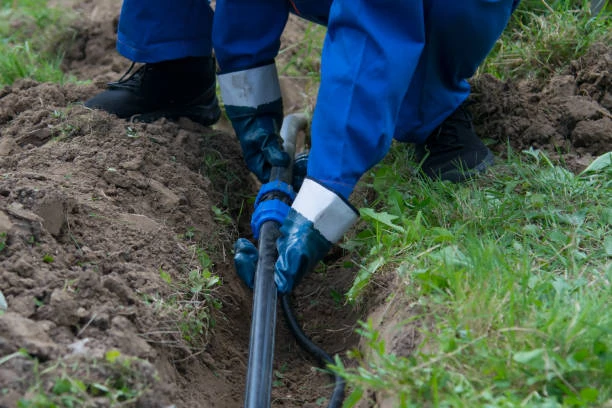In a historic move aimed at safeguarding public health, the U.S. Environmental Protection Agency (EPA) has introduced a landmark rule requiring the removal and replacement of lead pipes in the nation’s Water pipe systems. Lead pipes, once commonly used in water infrastructure, have long been a source of concern due to their toxic effects on human health, especially for children. Lead exposure has been linke to serious health issues, including developmental delays, learning disabilities, and behavioral problems. The new rule is designe to address this public health crisis by ensuring the full replacement of lead water pipes across the country.
In Maryland (MD), this rule has profound implications for both residents and local governments. The state, which has some of the oldest infrastructure in the U.S., is particularly affecte. As of 2024, the Maryland state government is already working to implement the EPA’s new rule, which could bring about significant changes in how water pipes are manage and replaced. This article will explore what this new rule entails, its impact on Maryland residents, the logistics of replacing lead water pipes, and the potential challenges and benefits associated with this sweeping policy.

The Importance of Removing Lead Water Pipe
Lead pipes were commonly use in the early 20th century for plumbing systems due to their durability and malleability. However, over time, it became clear that lead is a toxic metal that can leach into drinking water, posing serious health risks. The harmful effects of lead exposure, particularly for children, are well-documente and include:
- Neurological Damage: Lead poisoning can cause long-term damage to the brain, leading to reduced IQ, learning disabilities, and attention deficits.
- Kidney Damage: Long-term exposure to lead can damage the kidneys, affecting their ability to filter waste from the body.
- Harm to Pregnant Women: Lead exposure can have devastating effects on pregnant women and their developing babies, including an increased risk of miscarriage, premature birth, and low birth weight.
- Behavioral and Cognitive Problems: Studies show that children exposed to lead are more likely to experience behavioral issues, such as aggression and difficulty in school.
Due to these serious risks, removing lead pipes from drinking water systems has become a priority in public health initiatives. Lead pipes are not only hazardous to children but can affect entire communities, particularly those living in older homes or areas with outdated infrastructure.
What Is Water pipe the EPA’s New Rule on Lead Pipe Replacement?
The new EPA rule, which was finaliz in 2023, mandates that all lead service lines (LSLs) be replace as part of an ongoing effort to address the nation’s aging infrastructure. Key components of the rule include:
1. Water pipe Full Replacement Requirement
Under the rule, utilities are now require to replace all lead service lines, regardless of whether they are own by the property owner or the utility. This provision eliminates the previous practice of partial replacements, which often left residents with a mix of lead and non-lead pipes, continuing to pose a risk of exposure.
2. Water pipe Public Disclosure
The EPA now mandates that public water systems identify and inventory all lead service lines. This means utilities must publicly disclose the locations of lead pipes and keep detailed records of their replacement efforts. This transparency ensures that communities are aware of potential hazards in their water supply.
3. Water pipe Funding and Support
The EPA has allocated significant funding to assist local and state governments in replacing lead pipes. This funding comes through the Bipartisan Infrastructure Law (BIL), which provides $15 billion in grants to states to help replace lead pipes over the next decade. Maryland is set to receive a significant portion of this funding to accelerate the replacement process.
4.Water pipe Public Health Impact
The primary goal of the rule is to reduce lead exposure from drinking water, improving public health and preventing lead poisoning. By requiring utilities to replace all lead service lines, the rule aims to eliminate a significant source of lead contamination.
5. Timeline for Water pipe Implementation
Utilities are expecte to replace all lead pipes within a set timeframe, with the goal of completing the work within the next 10 years. Some jurisdictions may be give more time depending on the number of lead pipes in the area.
Impact of Water pipe the New EPA Rule on Maryland
Maryland, like many other states in the U.S., has a considerable number of lead pipes still in use. In fact, it’s estimate that the state has thousands of lead service lines still in operation, particularly in older, urban areas like Baltimore and Annapolis. These areas are know to have some of the oldest plumbing infrastructure in the nation, much of which dates back to the early 20th century.
The EPA’s new rule will have a direct impact on Maryland residents, especially those living in older homes or communities with legacy infrastructure. Here’s how:
1. Immediate Benefits for Public Health
The most significant benefit for Maryland residents will be improve public health. With the removal of lead pipes, residents will no longer be at risk of lead contamination through their drinking water. This is especially important in communities with young children, pregnant women, and vulnerable populations who are at higher risk of lead exposure.
2. Long-Term Infrastructure Improvements
The EPA’s rule provides an opportunity for Maryland to upgrade its aging water infrastructure. By replacing lead pipes with safer materials, the state can reduce the risk of contamination and improve the reliability and safety of its water supply. In the long term, this will help ensure that Maryland’s water system meets the demands of a growing population while maintaining high-quality drinking water.
3. Economic Opportunities
The replacement of lead pipes will generate significant economic activity in Maryland. Contractors, construction workers, and skilled laborers will be need to carry out the replacements. Local governments will also benefit from the funding provided by the EPA to support this work, which can create jobs and stimulate local economies.
4. Increased Costs for Local Utilities
While the EPA’s funding will cover a substantial portion of the costs, local utilities in Maryland will still be responsible for managing the logistics of pipe replacements. Utilities will need to work with contractors to replace pipes, identify lead service lines, and communicate with residents about the replacement process. Some local utilities may need to raise rates or seek additional funding to cover their share of the costs.
5. Disruption During Pipe Replacement
The process of replacing lead water pipes will inevitably cause some disruption to daily life in affected areas. Residents may experience temporary water service interruptions, construction noise, and road closures during the work. However, local authorities will likely minimize these disruptions by providing advance notice and working to complete the work as efficiently as possible.
The Logistics of Replacing Lead Water Pipes
Replacing lead pipes is a complex and labor-intensive process that requires careful planning, coordination, and execution. Here’s a look at what’s involve:
1. Inventory and Mapping
Before any replacement can begin, utilities must inventory all lead service lines in their jurisdiction. This can be a daunting task, especially in older cities like Baltimore, where many records are incomplete or outdated. Once the inventory is compile, utilities must map out the locations of all lead pipes to prioritize replacement efforts.
2. Coordination with Residents
In some cases, utilities will need to work directly with property owners to replace private service lines. Since many lead service lines run from the street to individual homes, property owners may need to grant access to their properties for the work to be do. Utilities will be require to notify residents in advance of any planned disruptions and provide clear instructions on how the work will proceed.
3. Pipeline Construction
Once the lead pipes are identifie, crews will begin the work of digging up the old pipes and installing new, non-toxic materials, such as copper or plastic. This involves careful excavation, pipe removal, and the installation of new pipes. In urban areas, this may involve working around existing utilities and infrastructure, which can slow down the process.
4. Testing and Quality Control
Once the new pipes are installe, testing will be require to ensure that water quality meets health and safety standards. This may involve checking for any residual contamination or leaks in the newly installed system.
Potential Challenges for Maryland
While the EPA’s new rule is a positive step forward, it is not without challenges. Here are some potential hurdles that Maryland may face as it works to replace its lead pipes:
- Funding and Budgeting: Although the EPA has allocate funding to assist with the replacement, local governments may need to secure additional resources to ensure the project is complete on time.
- Public Awareness: Some Maryland residents may not be aware that their homes or neighborhoods have lead service lines. Educating the public about the risks of lead exposure and the importance of replacing these pipes will be essential.
- Logistical Challenges: Coordinating the replacement of lead pipes across multiple jurisdictions, dealing with different types of infrastructure, and ensuring that work is complete efficiently could prove to be a logistical challenge.
- Disruption to Residents: Road closures, construction delays, and temporary water outages may disrupt daily life for Maryland residents during the replacement process. Managing these disruptions will be important for minimizing inconvenience.
Conclusion
The landmark EPA rule requiring the replacement of lead water pipes represents a critical step in ensuring safe.Clean drinking water for residents across the United States, including Maryland. The rule will bring immediate public health benefits, particularly in areas with outdated plumbing systems. By prioritizing the full replacement of lead pipes, the state can significantly reduce the risk of lead exposure. Improve its water infrastructure, and create new economic opportunities.
While challenges remain in terms of funding, logistics, and public awareness. The long-term benefits of this initiative will be well worth the effort. As Maryland continues to implement this rule, residents can look forward to cleaner, safer drinking water and a stronger. More resilient water infrastructure.
FAQs
- What is the EPA’s new rule on lead water pipe replacement? The EPA’s new rule mandates that all lead service lines in public water systems be fully replace. With a deadline for completion within 10 years. Utilities must also inventory and disclose the locations of lead pipes to the public.
- How will the new rule impact Maryland residents? The rule will improve public health by eliminating lead exposure through drinking water. Upgrade Maryland’s water infrastructure, and provide economic opportunities for contractors and laborers.
- How long will it take to replace lead pipes in Maryland? The full replacement of lead pipes in Maryland is expecte to take up to 10 years. Depending on the scope of the project and the number of lead service lines in each area.
- Will there be any disruptions during the pipe replacement process? Yes, there will likely be some disruptions.Including temporary water service outages. Construction noise, and road closures, as the replacement work progresses.
- How can residents find out if they have lead pipes? Residents can contact their local water utility to inquire whether their property is connect to a lead service line. Utilities are require to maintain records and provide information on the presence of lead pipes in their area.




